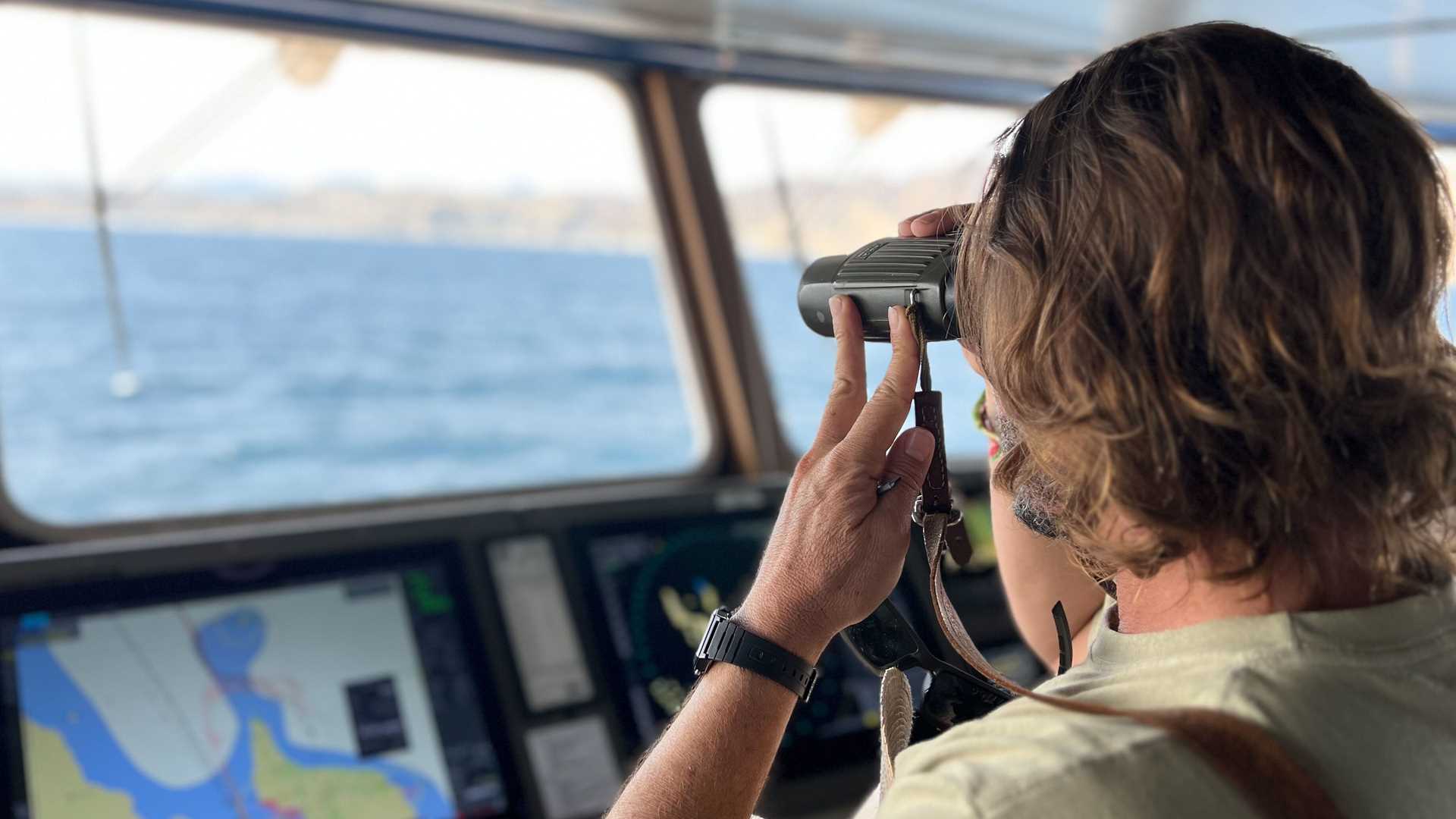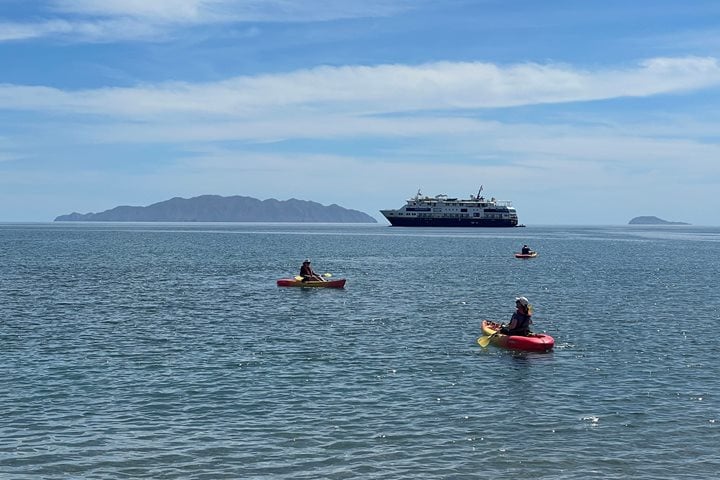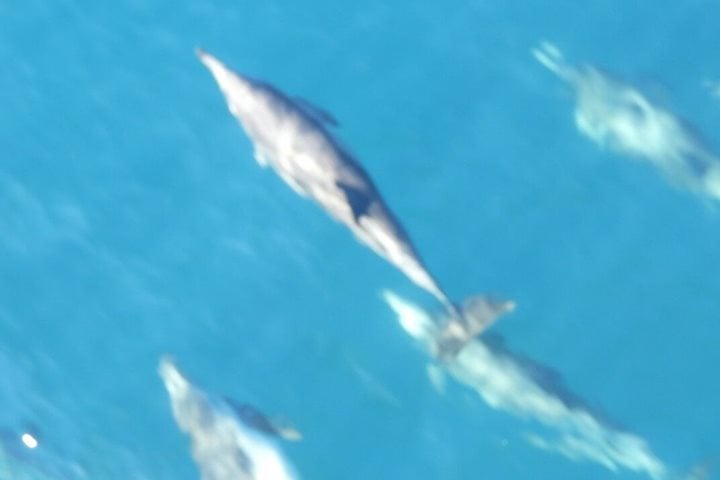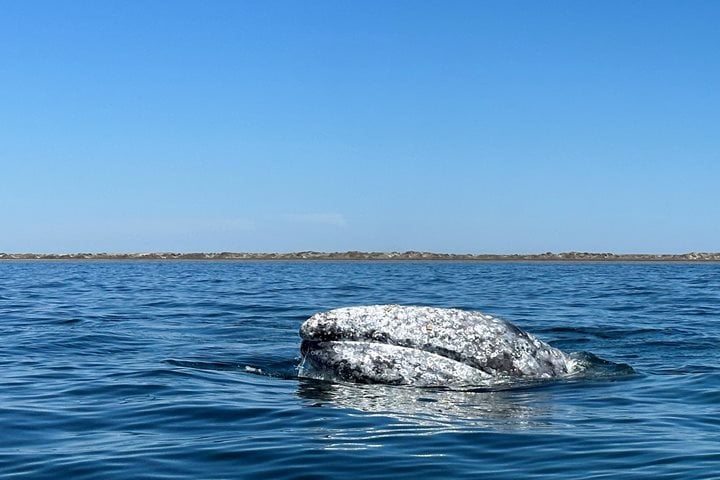All’s well that ends “whale” here aboard National Geographic Venture! Our final day in the magical waters of the Gulf of California saw us sailing in the company of “sea-lebrities” once again, this time with the greatest of them all: the blue whale, Balaenoptera musculus, the largest animal to have ever lived.
We arose to jumbled seas and diablo winds as we ventured north from La Paz and into the San Jose Channel, a known haunt of the planet’s truest leviathan. The frustrating, seafaring bluster is in fact the source of the area’s primary bounty: a bumper crop of plankton fertilized by the upwelling of cold, nutrient-rich waters brought to the surface by the sheer forces of the wind.
Even at 90+ feet long and weighing over 100 tons, a blue whale is far tinier than the Big Blue in which it swims, and finding one proved to be an all-hands affair. After many hours in pursuit, naturalist Kyle spotted the blow of a blue feeding in a deep – 1,200 feet deep – channel in the lee of Isla San Jose. We watched the behemoth feed as long-beaked common dolphins, Delphinus capensis, came to join this whale of a morning. One fruitful surfacing revealed a trail of bright pink poop from the tail-end of the whale: a sure sign of feeding on sea critters, a giant with a license to “krill.”
Mission accomplished, we pressed on to a quiet anchorage on Isla San Jose for our final adventures ashore. Arroyo walks, beachcombing, and kayaking were rounded out by margaritas on the beach to wrap up a most beautiful evening in the Sea of Cortez…until a humpback whale began lunge-feeding just off the ship, that is! We jetted out in Zodiacs to get a better look, and we watched as the whale enjoyed its own cocktail hour as the sun was setting. One final dive and we were off to the ship to pack and to reminisce about our journey together. From the gray whale lagoons to this final humpback encounter, it’s only appropriate to have concluded our voyage among the great whales on such a special note: “fin.”







